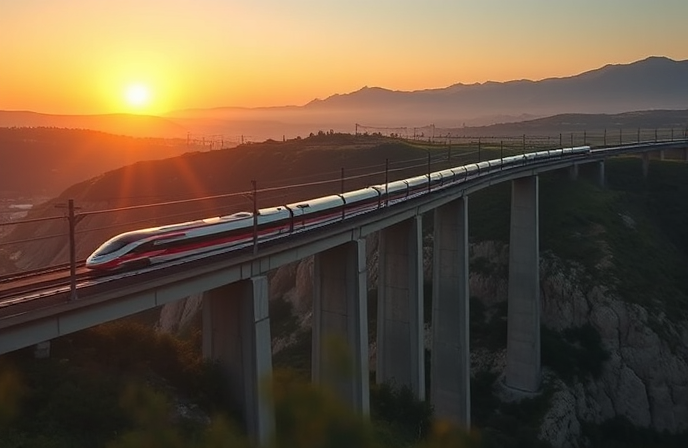Renfe’s Spain Rail Ridership: Fare Support & Growth Strategies
Renfe’s fare cuts boost Spanish rail ridership, increasing passenger numbers significantly since September 2022. Discounted tickets and free passes drive growth across the network.

Renfe’s Fare Support Measures Drive Rail Ridership Growth
Spanish national rail operator Renfe has seen a significant surge in passenger numbers since the introduction of fare support measures in September 2022. This initiative, which initially offered free travel passes, has evolved to include discounted ticketing options, bolstering rail usage across the nation. This article examines Renfe’s successful fare reduction strategies, analyzing the impact on ridership figures and outlining the latest discounted travel programs. The success highlights the effectiveness of government-backed initiatives in promoting public transport. The program, which includes Cercanías (commuter rail), Rodalies (Catalan commuter rail), and Media Distancia (medium-distance) services, aims to increase accessibility and encourage a shift away from private vehicle use. The measures are operational throughout Spain, with specific regional variations.
Ridership Soars Under Fare Support Scheme
Since September 2022, Renfe has distributed over 21 million free and discounted multi-journey passes to frequent rail users, according to data released up to June 2025. The initial phase, offering completely free travel passes, was extremely popular. In 2023, the first full year of the scheme, 7.1 million passes were issued. This figure increased to 7.7 million in 2024, marking a 9.34% year-on-year rise. Furthermore, over four million passes have already been distributed in the first half of 2025, indicating continued growth. These figures demonstrate a direct correlation between reduced fares and increased ridership. This success underscores the importance of fare support in promoting public transport, specifically the use of the railway network, as a sustainable alternative to private vehicles. The increasing demand confirms the success of Renfe’s policies and their contribution to Spain’s sustainability goals.
New Discounted Ticketing Options Unveiled
With the phase-out of fully subsidized passes, Renfe has introduced a new series of discounted ticketing options to continue supporting rail travel. As of June 23rd, new flat-rate travel passes for Cercanías, Rodalies, and Media Distancia services became available, with validity commencing on July 1st. These passes offer travel across all zones and networks for a monthly fee of EUR 20, or EUR 10 for young people aged between 1 January 1999 and 31 December 2010. These options are aimed at retaining and expanding the current user base. Passengers can purchase these passes up to 15 days in advance and choose the start date at the time of purchase, maximizing flexibility and convenience. A 10-journey travelcard is also offered, with pricing varying based on the specific route or region. These cards are valid for one year from the date of purchase, offering another option to passengers.
Targeted Discounts for Young Passengers and Regional Variations
Renfe continues to offer specialized fares to further encourage rail travel. Children born between 1 January 2011 and 31 December 2025, benefit from free multi-journey passes, promoting intergenerational appeal and family travel. Young passengers within the specified age range (1 January 1999 and 31 December 2010) enjoy reduced monthly pricing for Cercanías and Rodalies, alongside discounts of up to 70% on Media Distancia services. This targeted approach recognizes the role of younger demographics in establishing long-term ridership habits. These discounted passes will remain available until 31 December 2025. Moreover, Avant services, known for their speed and premium amenities, continue to offer a 50% discount, extending the reach of discounted rail travel. Furthermore, the commitment to accessibility is exemplified by the full subsidization of Cercanías and Cercanías Ancho Métrico services throughout the year in Cantabria and Asturias, further reinforcing the commitment to equal access to public transportation across various regions of Spain.
Conclusion
Renfe’s fare support measures have demonstrably driven ridership growth, validating the efficacy of fare reduction policies in boosting public transport usage. The strategic phasing of free travel to discounted ticketing illustrates a sustainable approach to maintaining momentum. The introduction of new monthly passes and 10-journey travelcards caters to diverse passenger needs and provides flexibility, critical for long-term success. The continued focus on youth-oriented discounts, alongside regional subsidies, underlines Renfe’s commitment to inclusive access and sustainable transport practices. The ongoing success of these initiatives has significant implications for the wider railway industry, with lessons to be learned by operators across Europe and beyond. It provides a blueprint for incentivizing public transport use and reducing reliance on private vehicles, contributing to lower emissions and environmental sustainability. The future outlook is promising, with continued monitoring of ridership data and adjustments to the fare structure. This will be done to optimize accessibility and promote the continued growth of rail travel within the Spanish railway network.


